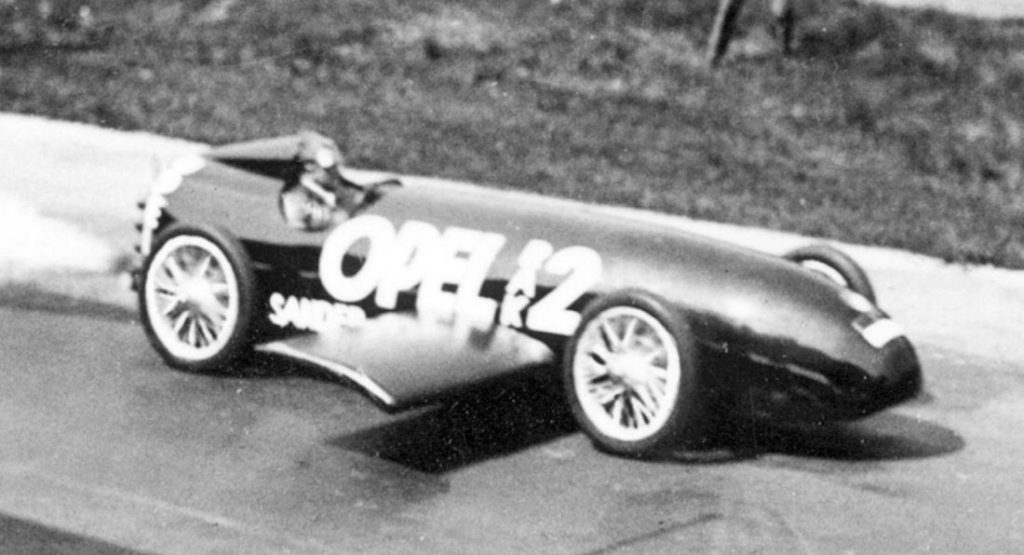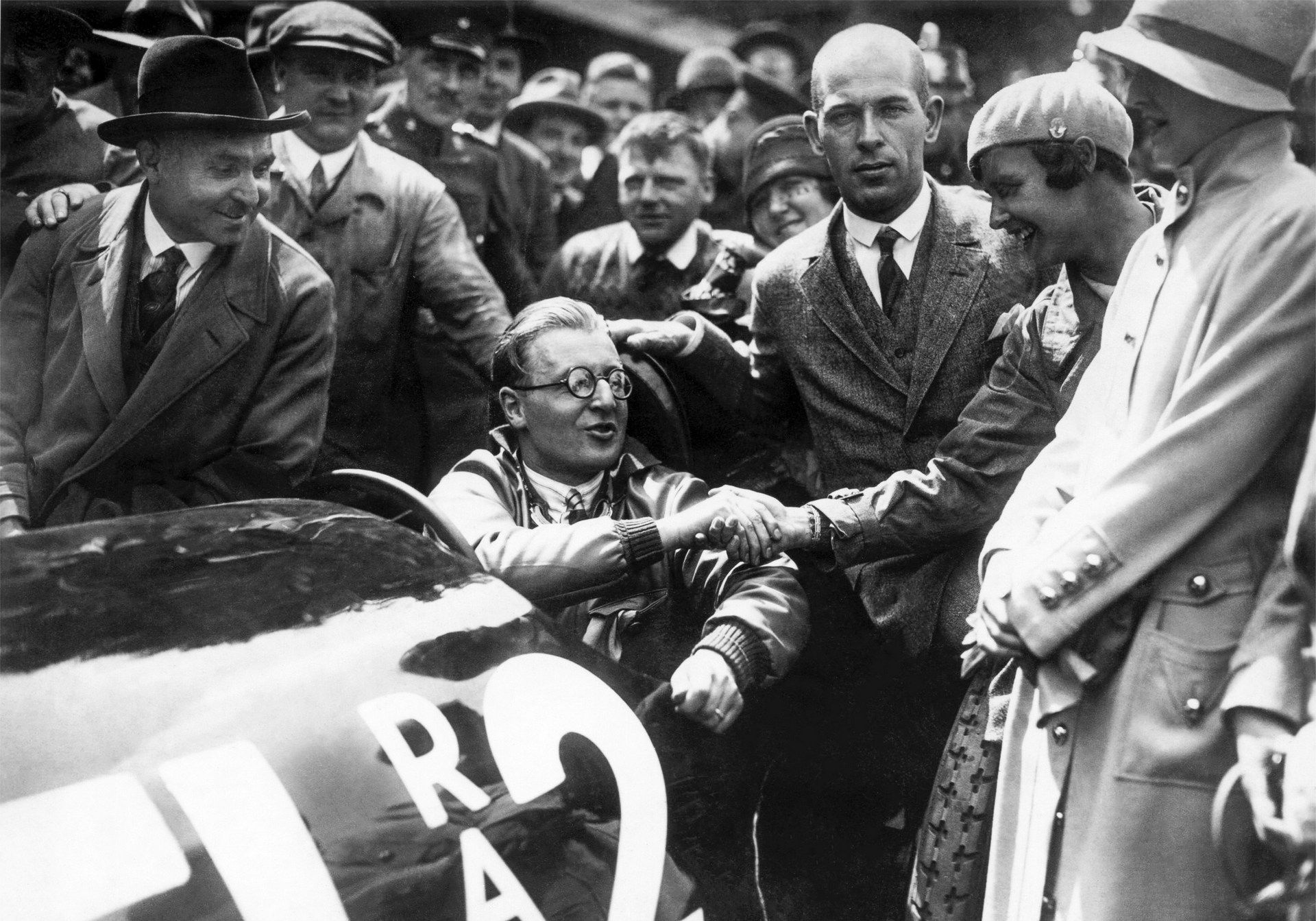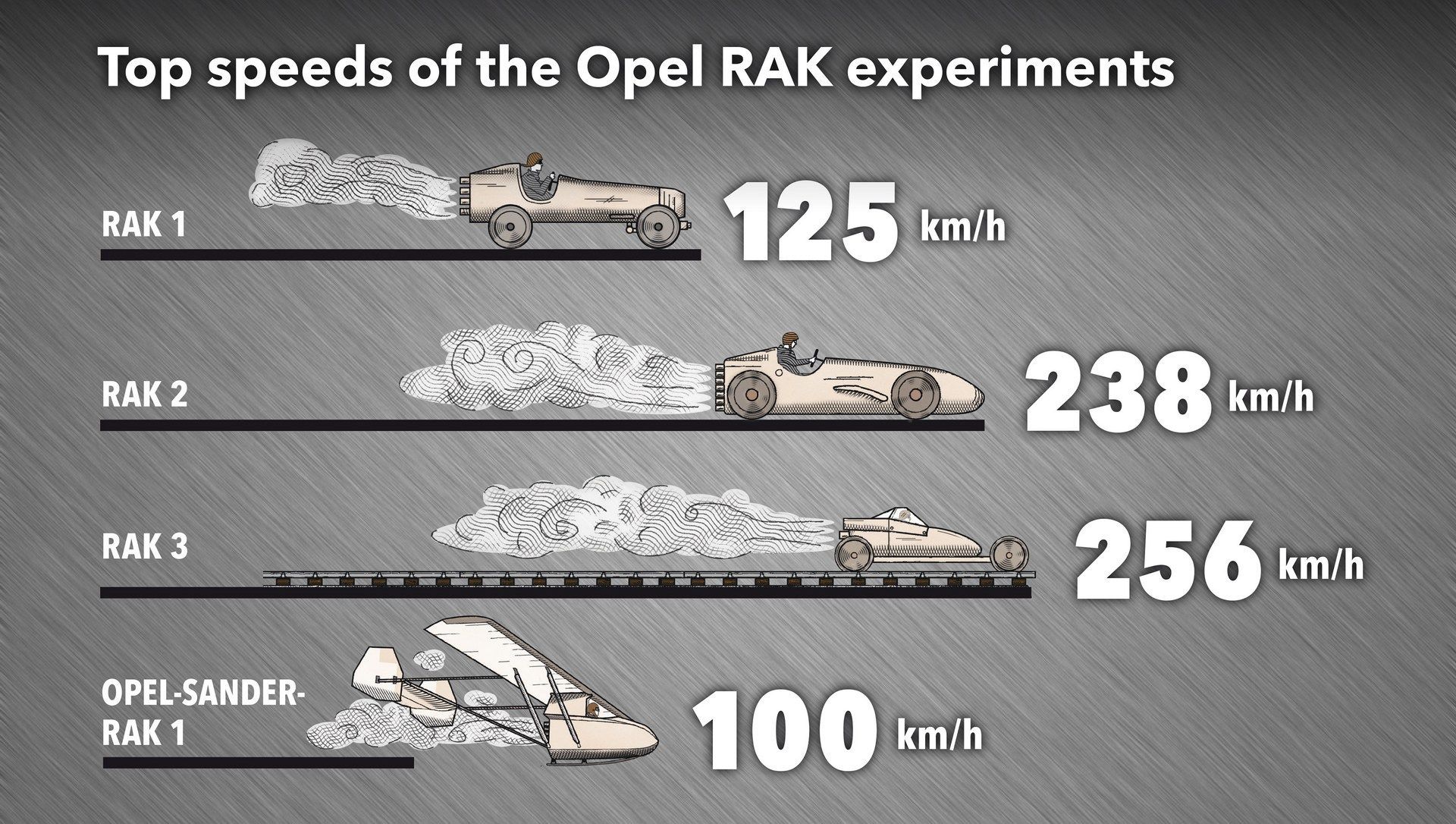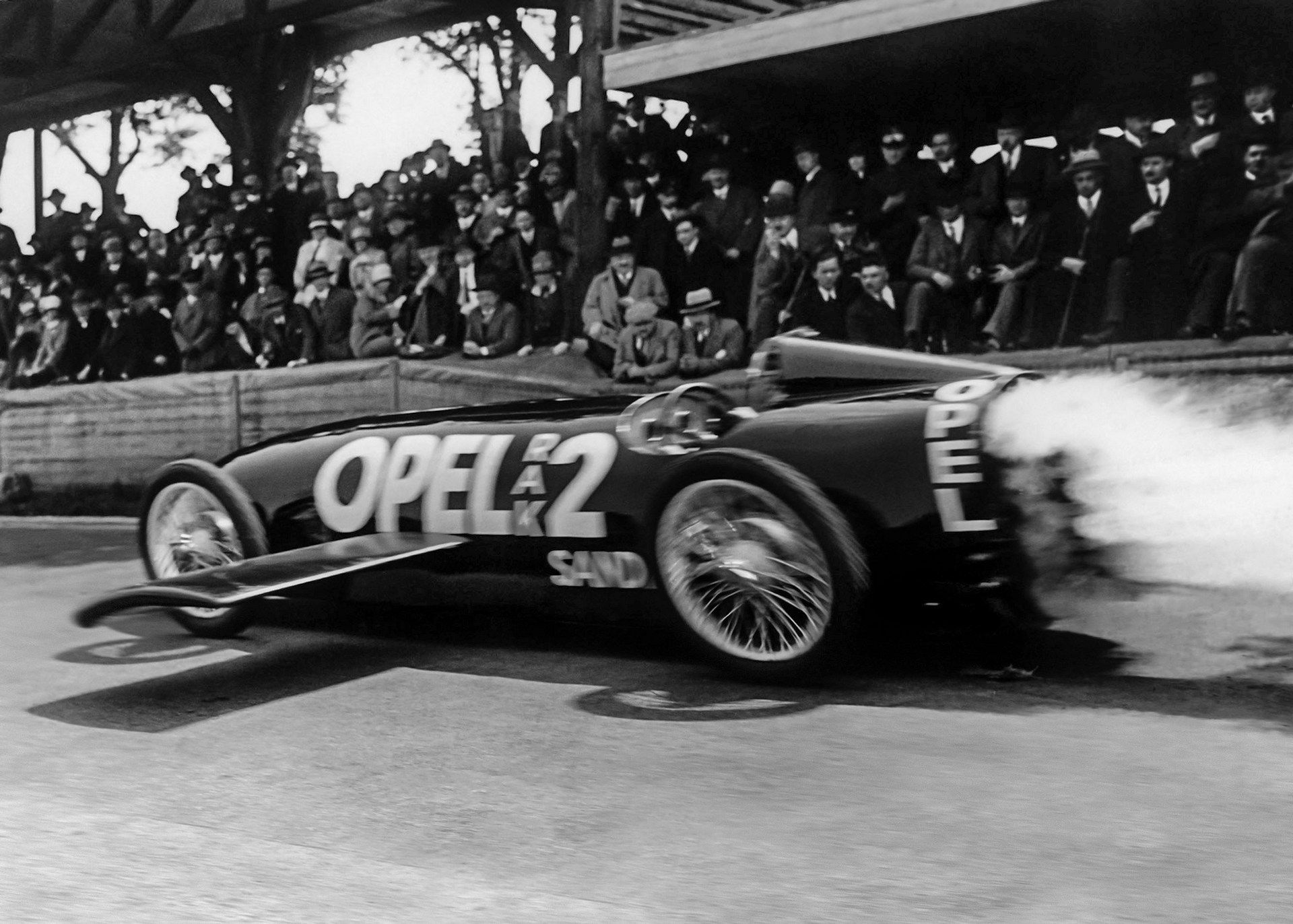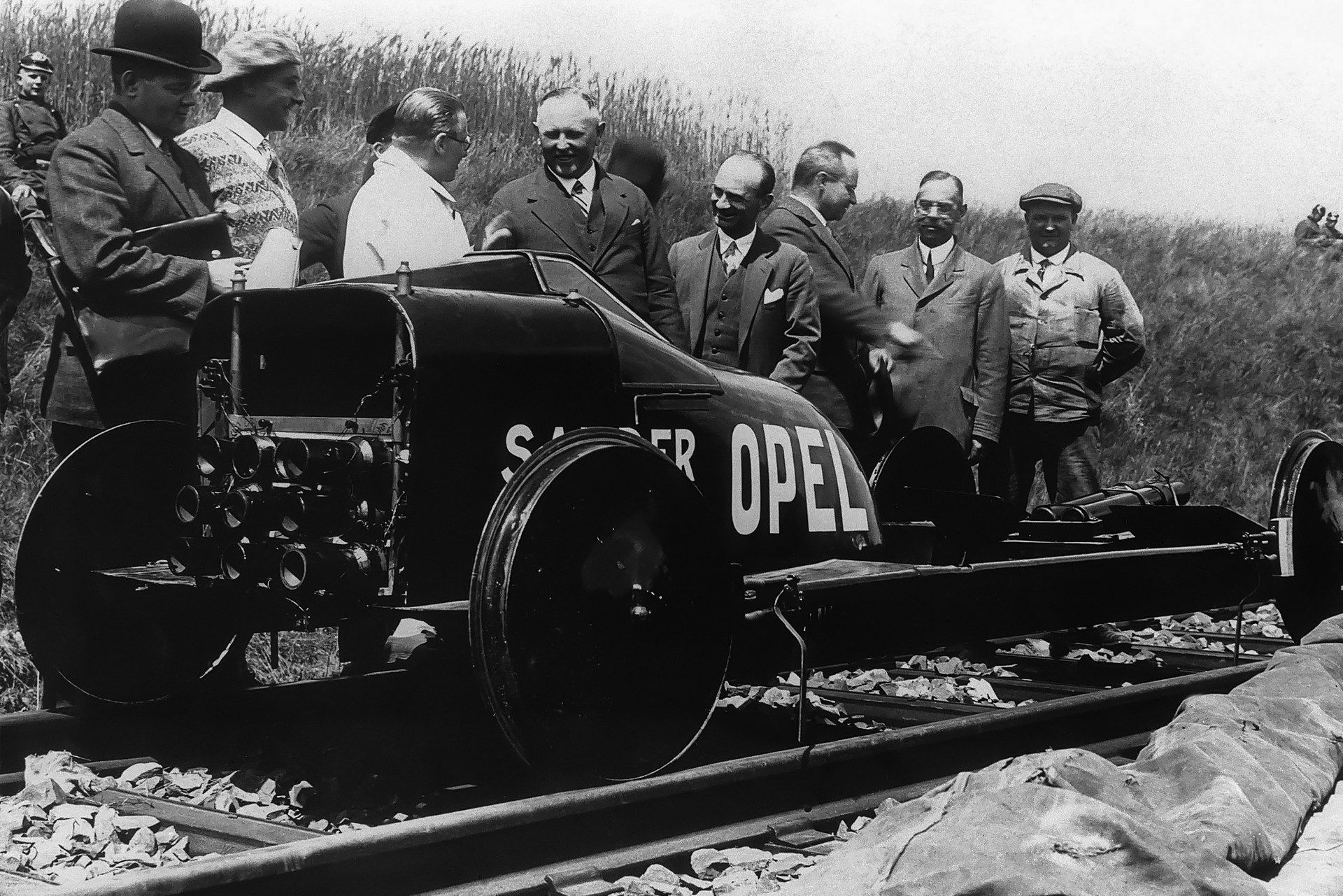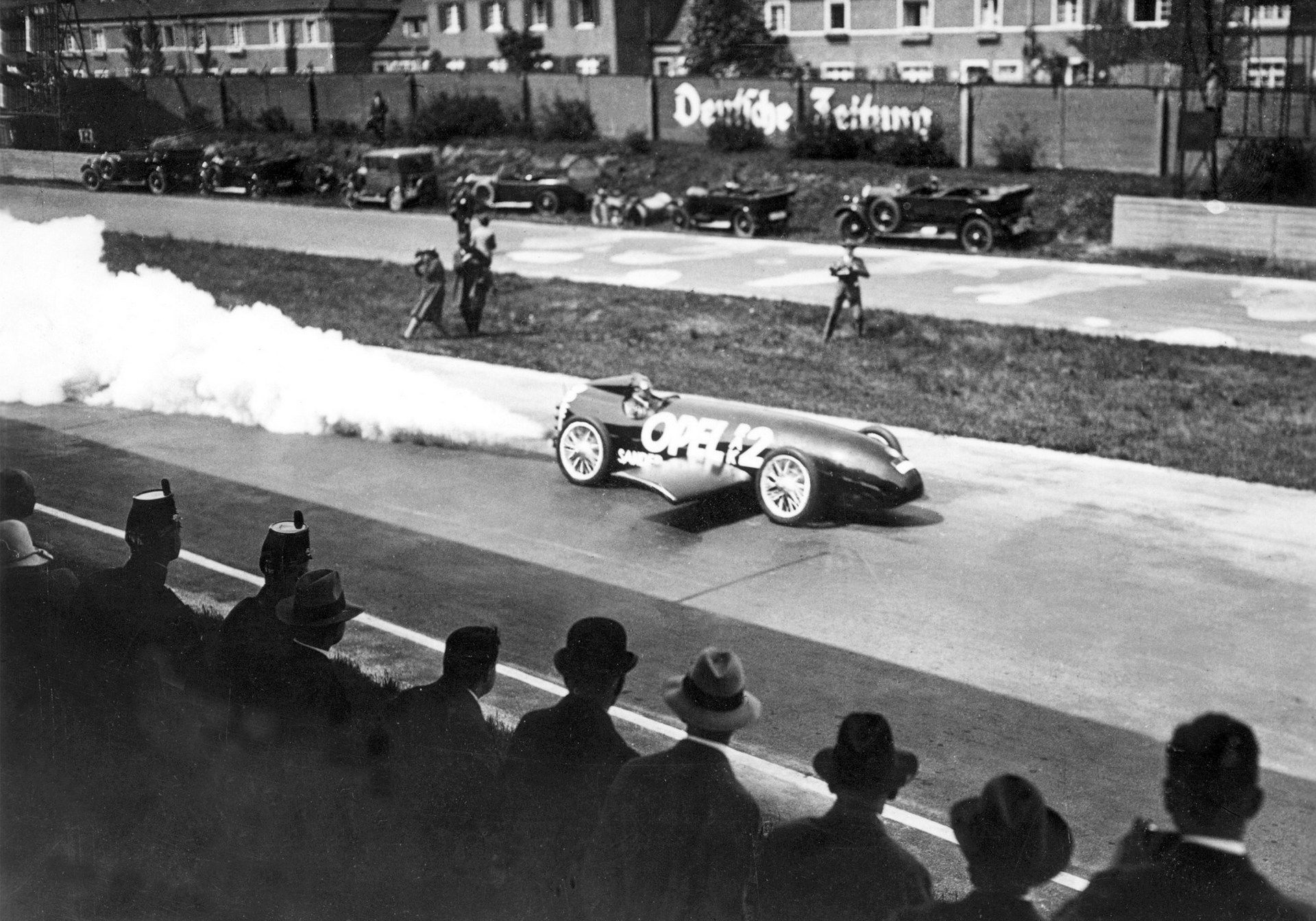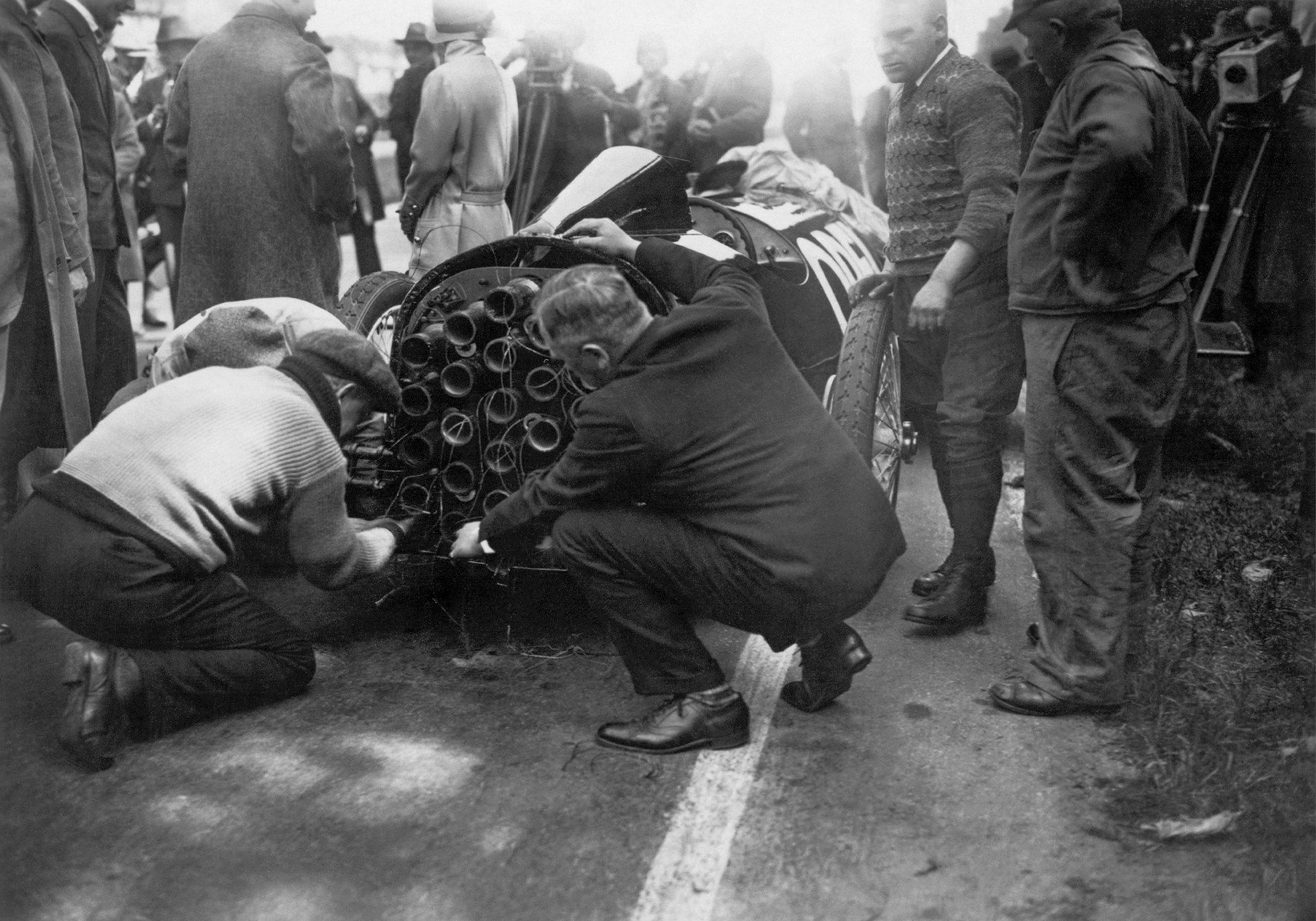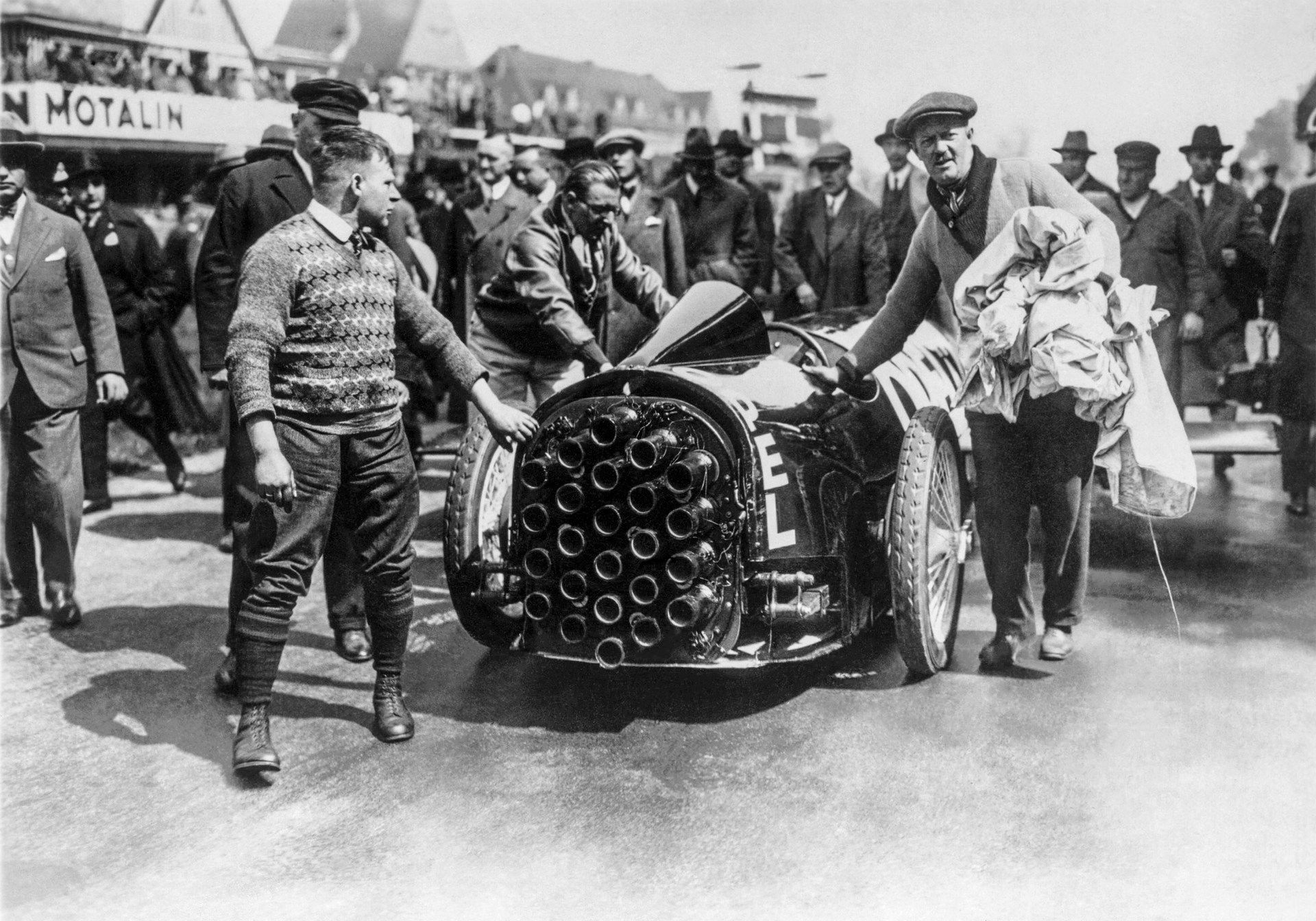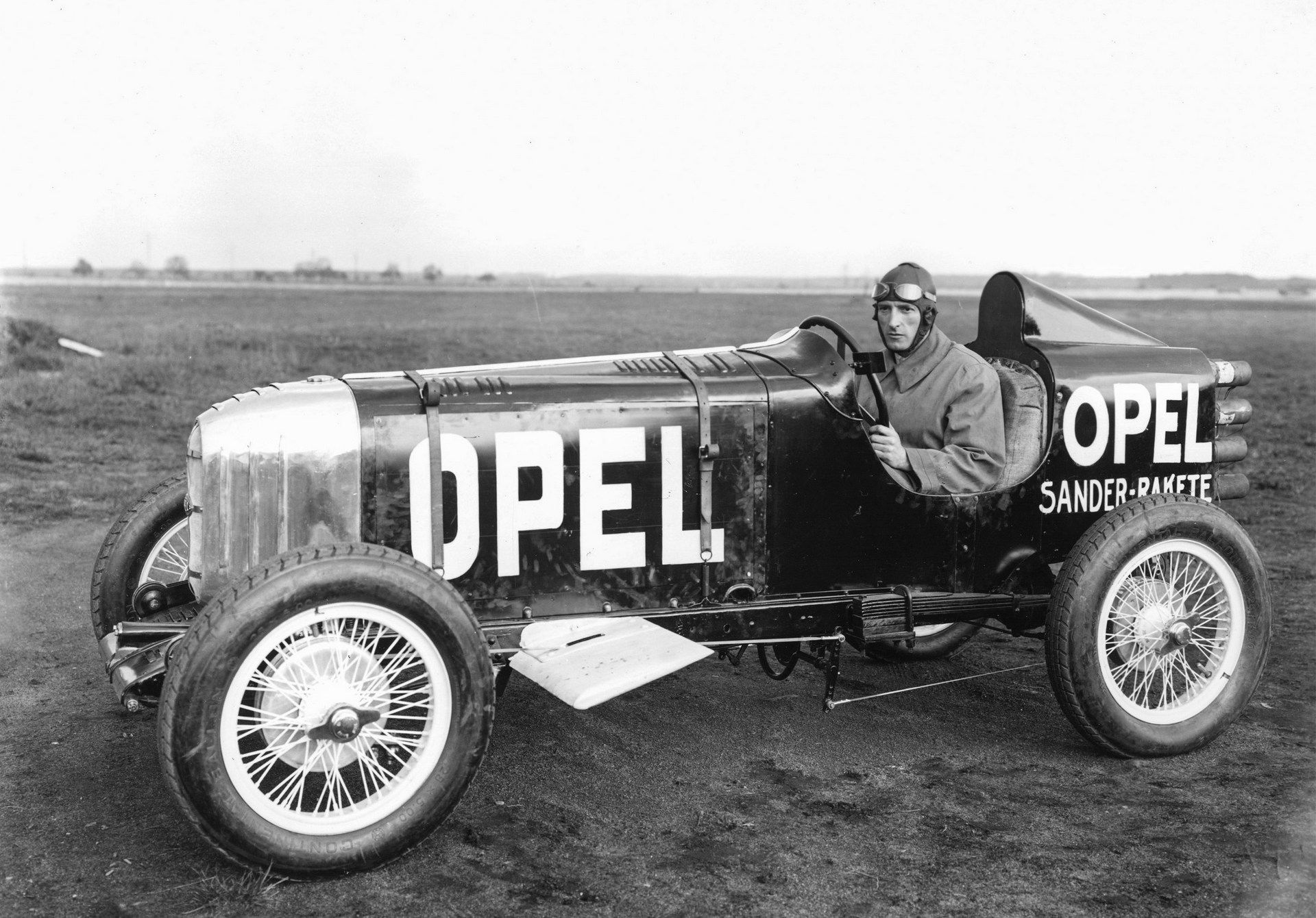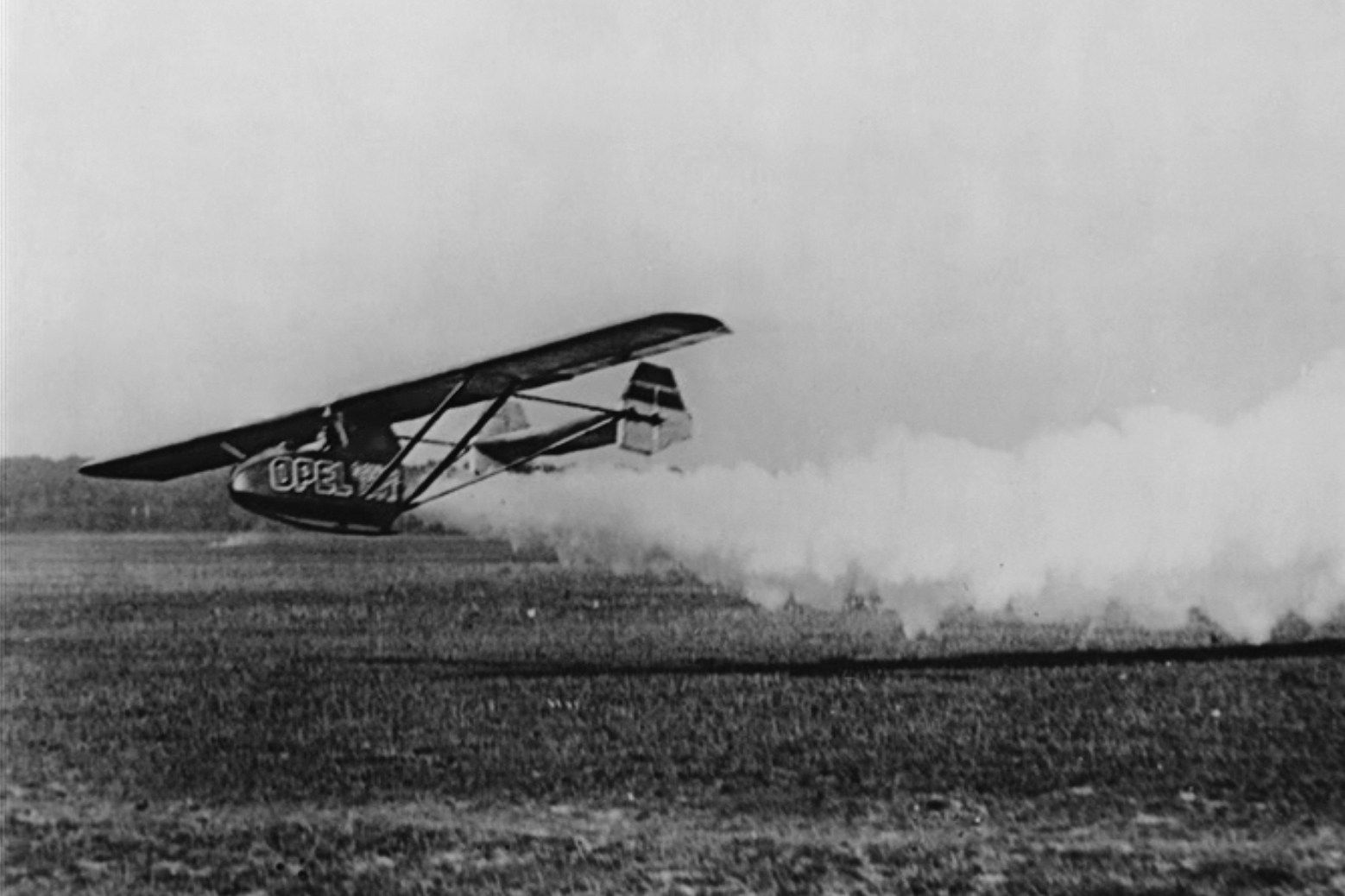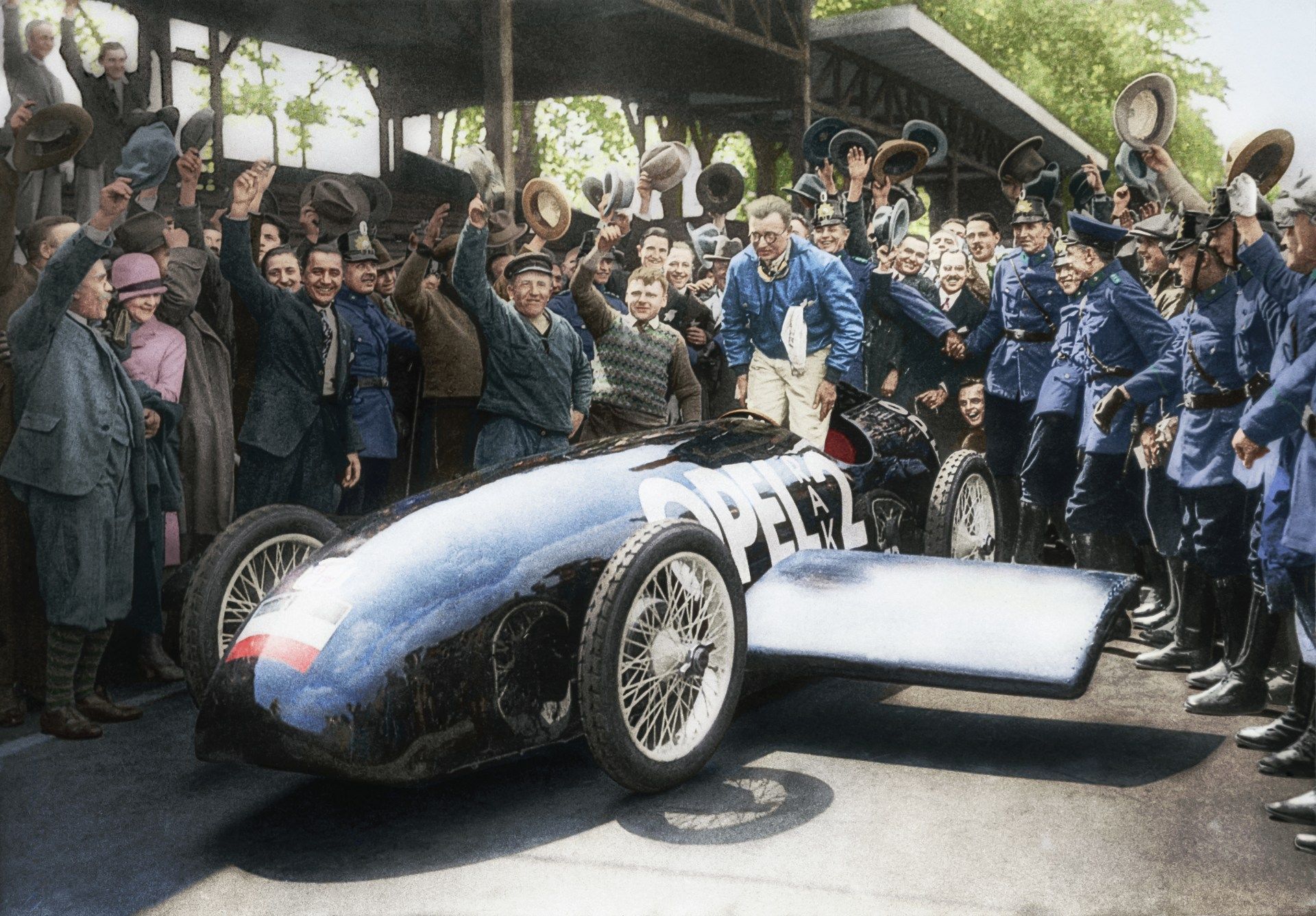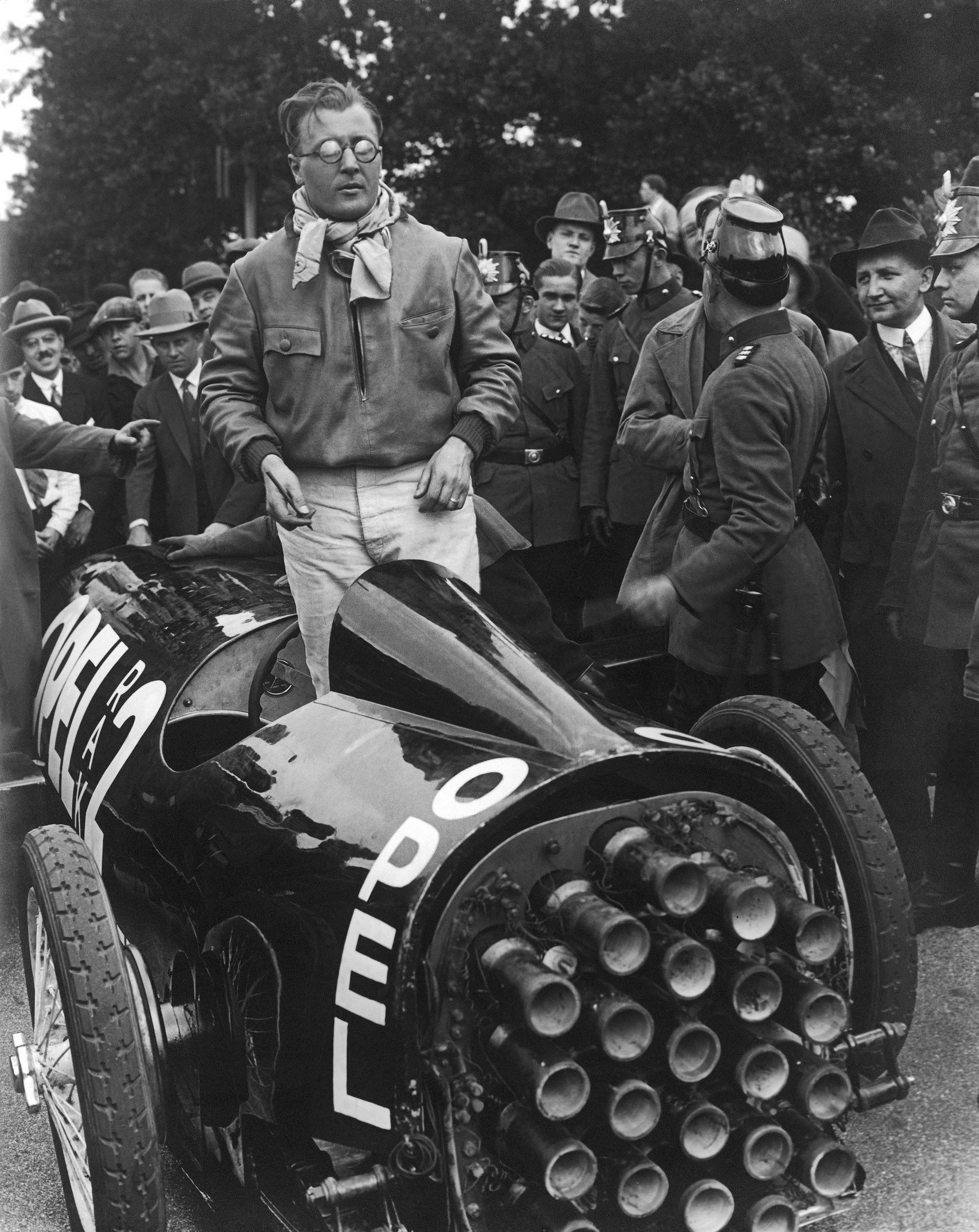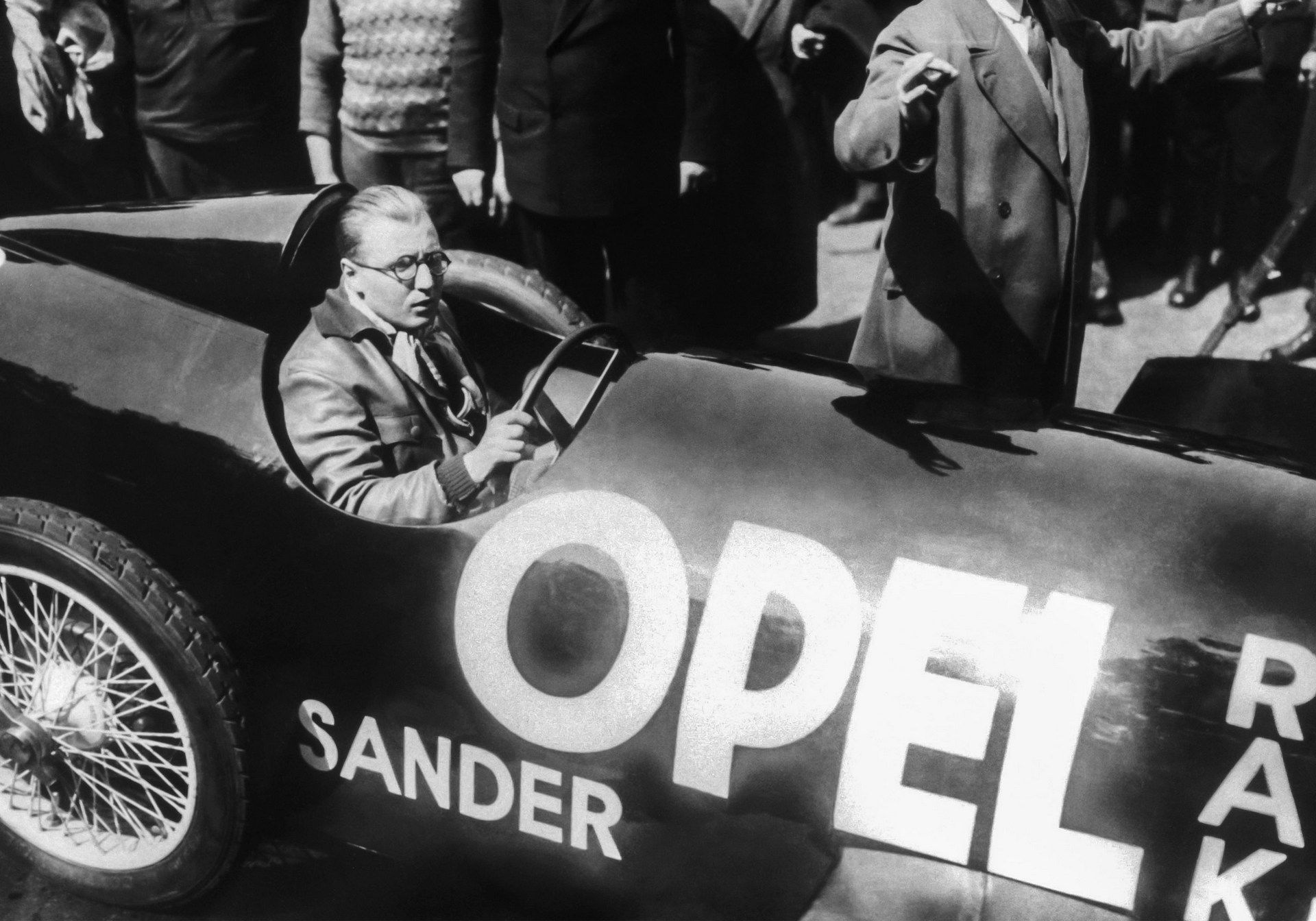Alternative powertrains are nothing new but in the early days of motoring, some of the ideas were pretty crazy.
Tomorrow, Opel will celebrate the 90th anniversary of the RAK2 which was a “futuristic racing car” that featured an aerodynamic body and classic wire wheels. That’s not too unusual for the era but the model was also equipped with ‘wings’ and 24 solid fuel rockets.
Despite sounding like a plane destined for the afterlife, 29-year-old Fritz von Opel successfully drove the car to 238 km/h (147 mph) on the AVUS in the early morning of May 23rd, 1928.
The story of the RAK2 started months earlier when Fritz von Opel became interested in rocketry after meeting astronomer Max Valier. His interest in cars and rockets would eventually culminate in the creation of the RAK1 which was loosely based on the Opel 4/12. An Opel engineer eventually tested the car and hit speeds of 100 km/h (62 mph) thanks to its 12 rockets and 40 kg (88 lbs) of explosives.
Following the successful test, work began on an even more powerful rocket car based on the Opel 10/40. The resulting RAK2 was an improvement on its predecessor as it featured larger wings, more aerodynamic bodywork and 24 rockets which developed six tonnes (13,227 lbs / 6,000 kg) of thrust.
Since the Rüsselsheim test track was too small to test the car, Opel decided to drive the model on the AVUS as it featured two long straights. Thousands of people attended the demonstration and Opel says the company was “immediately recognized” for building such an innovative and progressive car.
Opel would eventually go onto experiment with a rocket bike and the RAK3. The latter model set a new speed record for rail vehicles when it reached 256 km/h (159 mph) in 1928. The company would go on to develop the rocket-powered Opel-Sander RAK 1 plane but the Great Depression meant the automaker had to turn its attention to more traditional automobiles.




